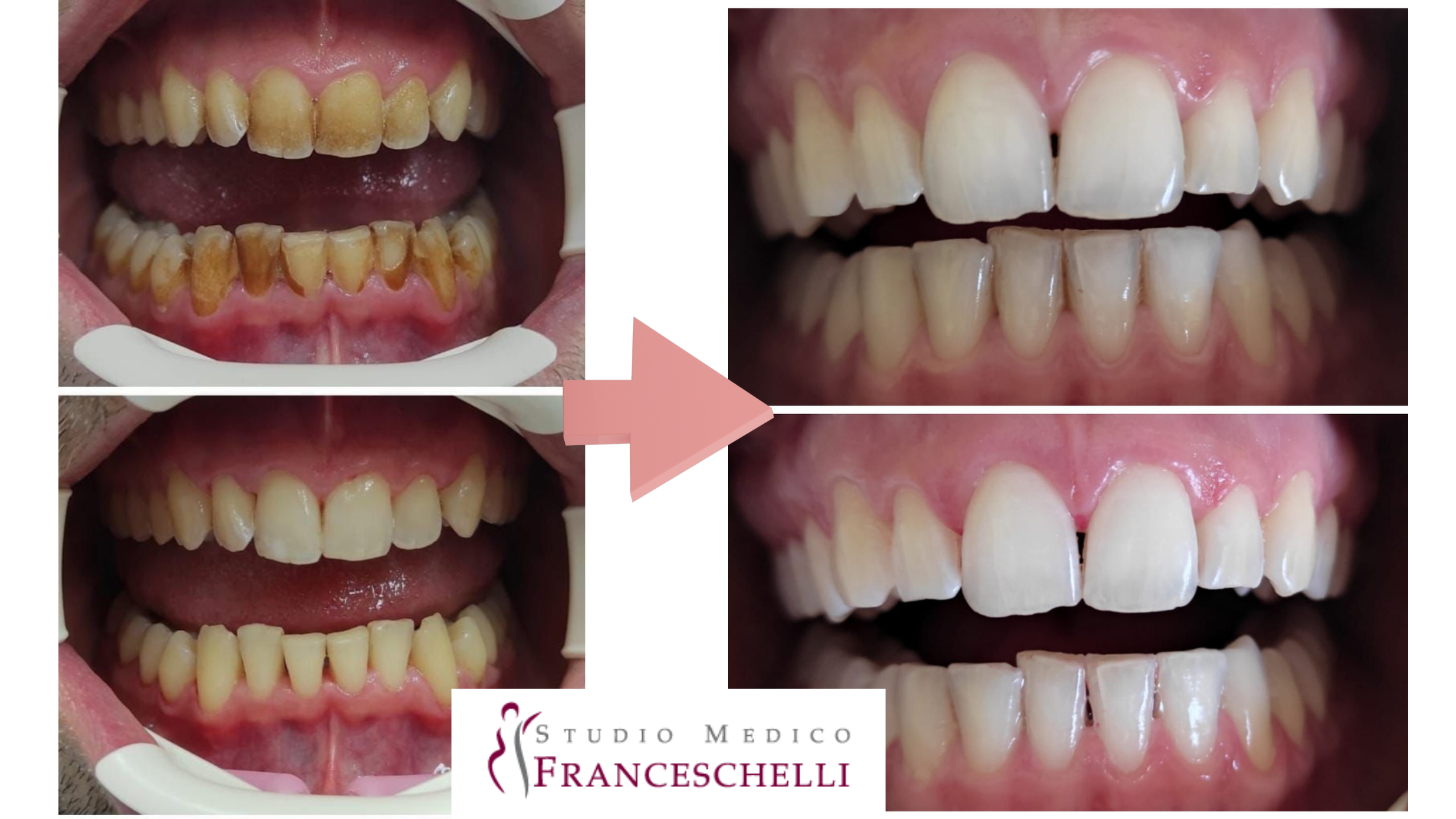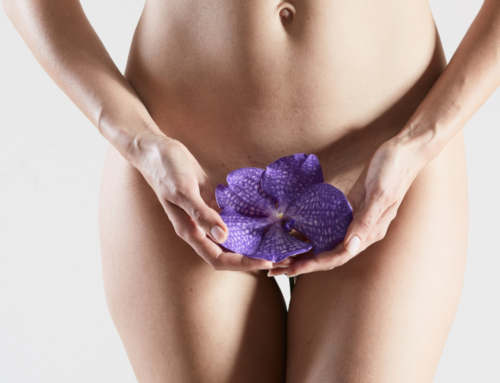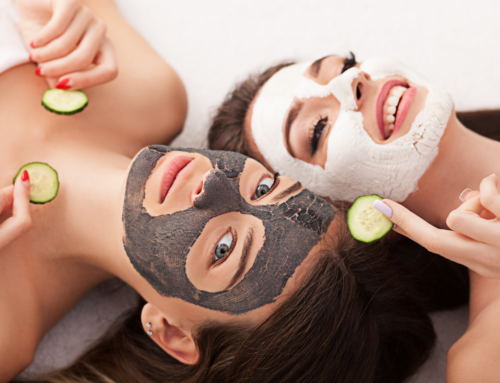Professional teeth whitening How does it work.? – Bleaching (English term that means “whitening”) is a professional aesthetic treatment, indicated to treat dental discolorations that may occur during the life of an individual.
Teeth whitening can be carried out both on vital teeth and on devitalized teeth (which have darkened due to tooth death).
WHO DOES PROFESSIONAL WHITENING?
Professional whitening is carried out in dental clinics, or in specialized centers, by the dentist or dental hygienist.
WHITENING VS TEETH CLEANING
Detartarase (better known as teeth cleaning) is a procedure to be performed necessarily before an aesthetic treatment of teeth whitening.
The teeth must be cleaned of tartar and plaque, all external pigmentations must be removed, and the gums must be rosy and healthy.
Only after performing detartarase, you can proceed with the aesthetic whitening treatment.
WHAT PRODUCTS ARE USED FOR PROFESSIONAL BLEACHING?
The most used whitening products in the professional field are represented by gels based on 38% hydrogen peroxide or gels based on carbamide peroxide.
These substances, once activated, release free radicals capable of penetrating the structure of the tooth. Within it, redox reactions are triggered that break down the stain molecules into smaller, colorless compounds.
WHAT IS THE BLEACHING PROCEDURE?
After applying a liquid dam to the gums to protect them from contact with the chemical agent, the whitening gel is distributed on the teeth for a variable time, depending on the percentage of hydrogen peroxide contained in it. The color of the teeth will be recorded before and after treatment.
WHAT WILL THE RESULTS BE?
In most cases, excellent results are achieved, but there is no method to know how white the teeth will be at the end of the treatment.
For the maintenance of the result obtained, it is necessary to know that the 48 hours after treatment are the most important. As the whitening gel has penetrated between the prisms of the enamel to correct the color, so also tobacco, smoking, nicotine, coffee, food coloring can penetrate the tooth, nullifying the treatment just performed.
CAN THERE BE ANY CONTRAINDICATIONS?
Like all clinical treatments, teeth whitening has risks and limitations. Side effects, such as gum irritation and dentinal hypersensitivity, may occur.
In addition, the presence of caries, tartar or gingivitis, require a preventive resolution of the problem before carrying out cosmetic treatment.
Dr. Cristina Gibilisco – Dental Hygienist
If you want to have more information, contact our aesthetic medical office in Rome.
Or you could:
- take a look at the other articles
- take advantage of our promotions
- discover our treatments
- see the page on nutrition
- do you need a dental visit?
- find out more about trichology services





